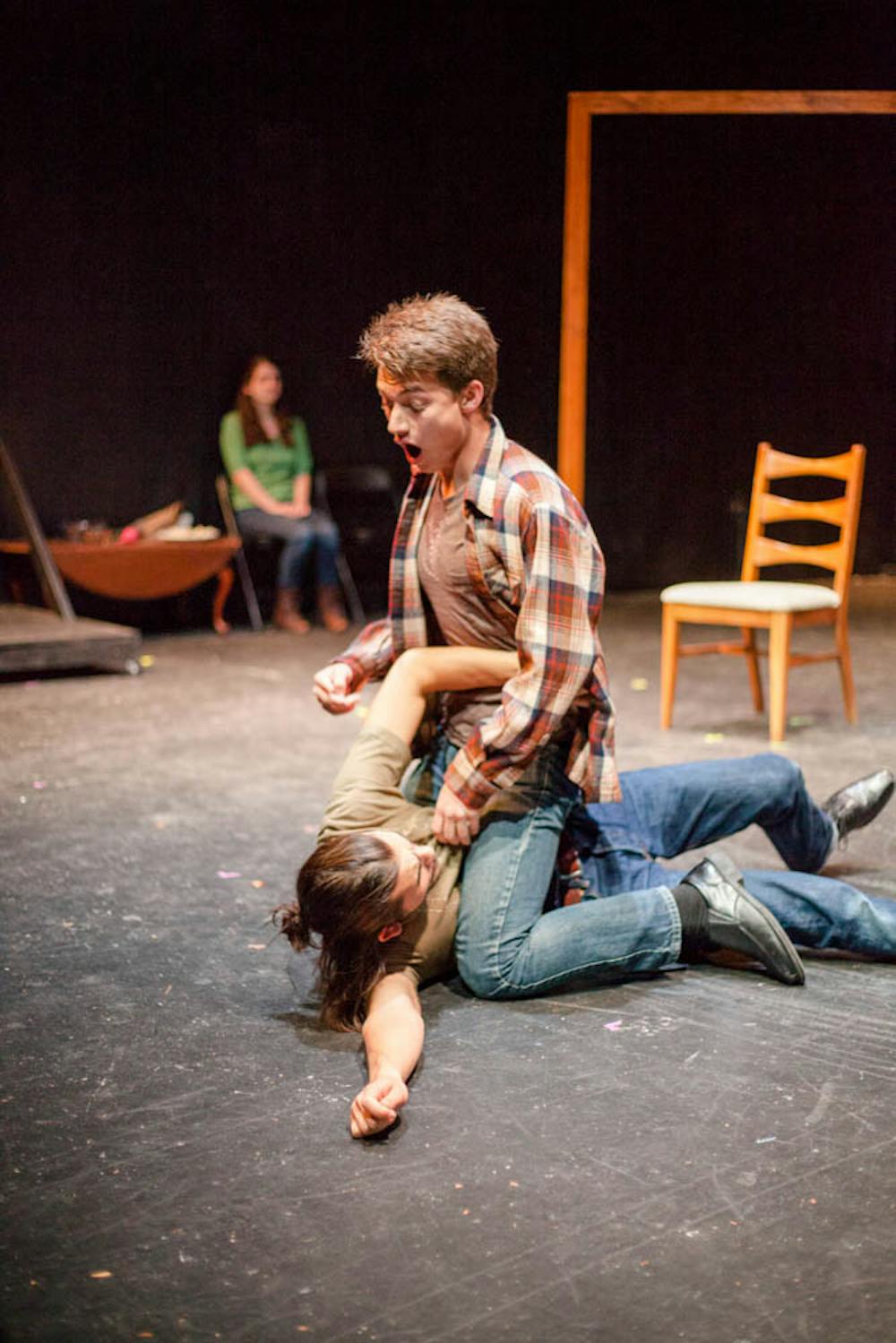“Melancholy Play: A Contemporary Farce,” Production Workshop’s new play, is anything but what its name implies. With humorous one-liners, unique twists and a surprising number of references to almonds, the play is hilariously loud and fun.
Directed by Shade Au ’19, “Melancholy Play” was originally written by playwright Sarah Ruhl. The show is centered around Tilly (Tara Sharma ’20), a bold and unashamed woman whose friends fall in love with her and her melancholy throughout the play.
The play strives to demonstrate that “melancholy is reflective; it is a mood” rather than a characteristic or description, Au said. “It took a lot of work to reframe melancholy as something that is about human connection and … allows others to empathize with each other,” he added. The show succeeds in showing the beauty in the main character’s sad and wistful take on life.
One of the most defining moments in the play is when Frank, Tilly’s friend, asks her, “Are you happier now?” to which she replies “Yes, I think so.” This exchange highlights the turning point in the play when Tilly begins to feel happy, and — surprisingly — where the problems begin. Her friends start to feel differently about her. “The problem is that when Tilly becomes happy, she stops listening to her friends,” said Au. This is illustrated when Frank pleads with her, “Can you even see me?”
One couch, two chairs and two mobile frames are all that comprised the minimalist set. As Au directed the show, he was “thinking about showing the downspace as what it is, which is … an empty room, and showing that you can still make theater in just that,” he said. The frames served as windows, doors and invisible walls, which tie together the two worlds.
Possibly one of the most distinctive features of the show was the background wall that featured the titles of each scene, such as “Tilly asks Frank why is he like an almond,” “By the bedside of Frances the almond” and “Joan reveals a terrible secret to Tilly.”
With each character wearing a different colored shirt, each personality was visibly individualized. Each costume also had accessories such as aprons or pockets that were stitched on the costumes to reflect each character’s profession , such as a bank teller or hair dresser, Au said.
The tone of the play was kept simple but significant with Julian Gau ’19 playing all the background music on a cello. At one point, the characters broke the fourth wall and acknowledged the cellist and his music, asking him to play happier tunes. Gau told the actors, “It’s a little difficult on a cello.”





